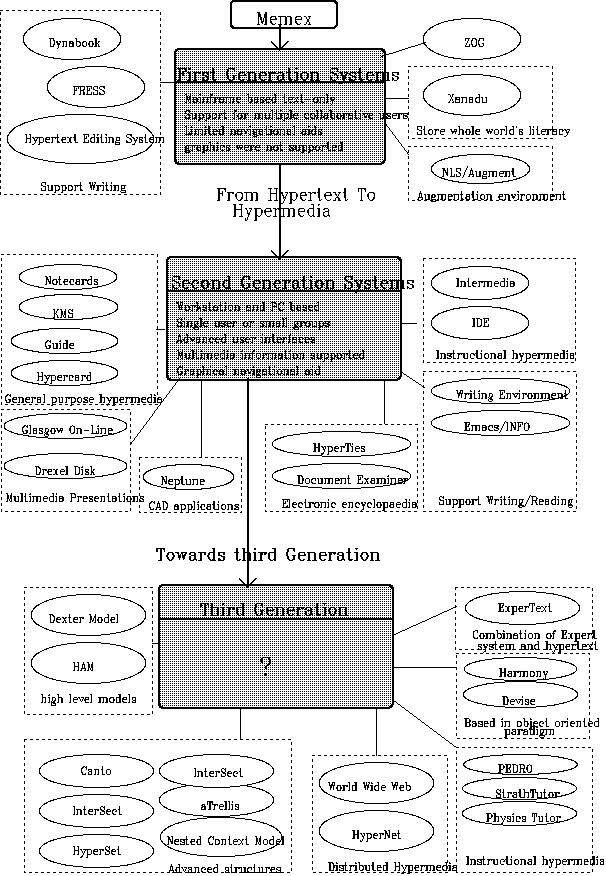
Contents in Current Page:
Hypermedia Systems - Introduction
We can divide hypermedia systems in two generations (Halasz, 1998). The first generation included systems such as Xanadu, ZOG, NLS/Augment, Hypertext Editing System, FRESS, Dynabook. They were mainframe-based text-only hypertext systems. They had support for multiple users sharing the hypermedia information network. The second generation of Hypermedia began in 80s with the arrival of workstation-based research oriented systems like Notecards, Neptune, Intermedia, KMS, Writing Environment, Emacs/INFO, Document Examiner. These systems are similar in concept to the first generation systems. In addition, they supported graphics or animation nodes and they had more advanced user interfaces. In contrast to first generation systems second generation are designed to support one user or a small group of users. These research oriented systems were followed in next years by a number of systems running in platforms like PC and Macintosh. These systems which include Guide, HyperTies, Hypercard are more limited in functionality and scope than the workstation-based systems but in general have quite the same capabilities with them. Beyond these well known systems there are many other research oriented prototype systems which represent the research effort for the development of third generation hypermedia systems. Some of them are especially well documented such as aTrellis and ExperText. Dexter model is another well documented hypermedia reference model. Prototype systems like DeVise and Amsterdam hypermedia are based in Dexter model. Hypertext Abstract Machine (HAM) is another high level hypermedia model. Canto, Nested Context Model, HyperSet, InterSect, HyperNet are hypermedia models and prototype systems aiming in eliminating hypermedia problems by providing more elaborate structuring mechanism than the simple graph-based hypertext model, composites entities. Harmony is a prototype hypermedia system which is based in object oriented paradigm. StratchTutor, PEDRO, Physics Tutor are prototype hypermedia instructional systems. World Wide Web is another hypermedia system which was developed to be a pool of human knowledge, which would allow collaborators in remote sites to share their ideas.
Hypermedia systems - A Graphical Overview
